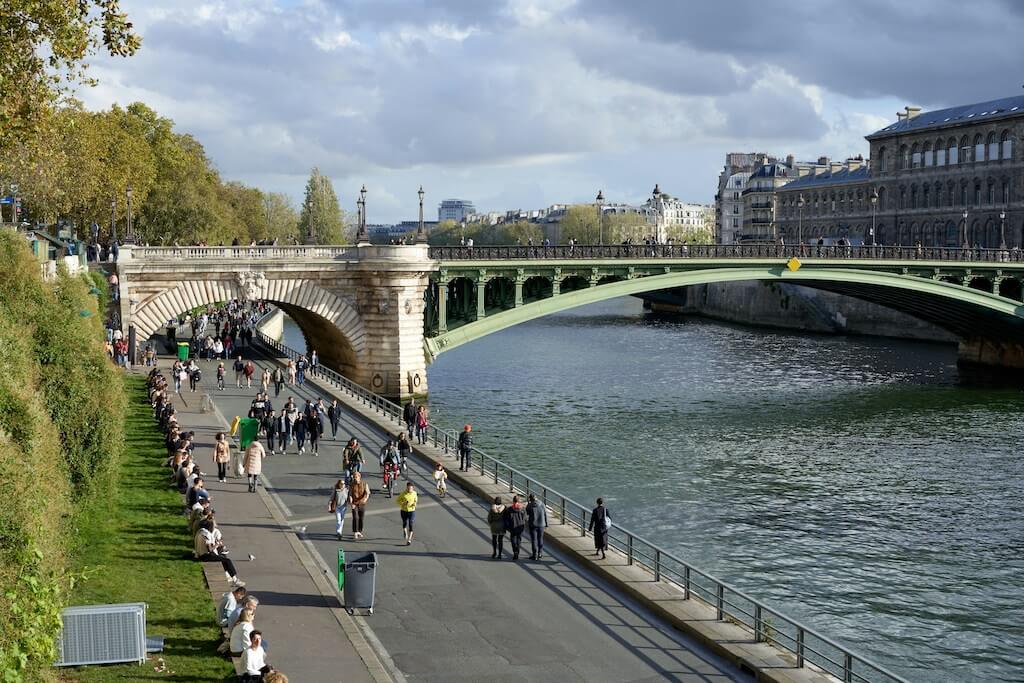Autumn Gear Guide
Find inspiration in our Gear Guide that will keep you out on your bike through wind or rain.
Download NowThe Paris Olympic Games are a month away, and the idyllic location in a city that has embraced urban cycling, active mobility and sustainable transportation presents a unique opportunity to inspire not only athletes but people and governments worldwide. The Olympic Games inspires young athletes around the world. But, this year is different. This year, […]
The Paris Olympic Games are a month away, and the idyllic location in a city that has embraced urban cycling, active mobility and sustainable transportation presents a unique opportunity to inspire not only athletes but people and governments worldwide.
The Olympic Games inspires young athletes around the world. But, this year is different. This year, with the Summer Olympics arriving in Paris from July 26 to Aug. 11, it’s an opportunity to show a city that has decided with some serious authority to put people and the planet first. And an opportunity to inspire cities around the world to do to same.
Embracing a vision to become a cycling city of unparalleled excellence, Paris has embarked on a transformative journey that is already resonating far beyond its borders. As the world’s attention turns to the spectacle of the Olympic Games, Paris’s steadfast commitment to promoting sustainable mobility could spark a global movement.
In the lead-up to the Games, at least 415km of cycle routes are due to be added and available for locals and visitors in time for the Paris 2024 Olympic Games and as a legacy for the city following the completion.
A major feature of Paris 2024’s legacy has moved closer to its realization. Leading up to the games in 2023, the Ministry of Transport unveiled the map of the 415-kilometer cycling network set to be completed for the Games.

“As it stands, 320km of the routes have been completed which will see Parisians and visitors able to ride from Bercy Arena in the 12th arrondissement down to the Place de la Concorde and Grand Palais in the eighth and beyond,” stated the French Minister Delegate for Transport Clément Beaune.”The Trocadéro, Eiffel Tower, Roland Garros, and Parc des Princes will all also be accessible on two wheels.”
“We will have 418 km of bike lanes as a legacy after the Games,” continued Beaune.
“Local authorities and the city of Paris are in the process of increasing the service offer, the city has announced more than 3000 Vélib [public bicycles] and then there are private operators who are present and ready to strengthen their offer,” Beaune emphasized, referring to the need for 15 to 20,000 additional bicycles.
“I understand the communities saying ‘we are ready to increase the supply’ but there will be a peak during the Games that will not last, we have to find the right balance.”
Since then, Paris has continued to move forward in creating a stunning city transformed by the bicycle as well as more and more spaces that emphasize people over motor vehicles.
In a groundbreaking bid to transform itself into a more sustainable and cyclist-friendly metropolis, Paris is rolling out its ambitious 2024-2030 Climate Plan. This comprehensive initiative, which was scheduled for presentation to the Paris Council in December 2023 and subsequent approval by elected officials in 2024, is underpinned by a commitment to expedited, localized, and equitable climate action, with an emphasis on impactful changes that resonate with residents daily.

The Paris Olympics will be an opportunity to showcase these initiatives.
“Central to the city’s vision is an overarching plan to prioritize cycling infrastructure, aiming to create a more connected and accessible urban landscape for cyclists,” stated Mayor Anne Hidalgo. “Paris plans to significantly expand its cycling network, introducing 180 kilometers of additional cycling paths and 130,000 bicycle parking spaces by 2026.”
“This cyclist-centric approach is designed to not only reduce pollution linked to car traffic but also to promote sustainable and healthy mobility alternatives for residents.”
Paris is also in the middle of a plan to transform the French capital into a 100 percent cycling city.
“For each new cycle path, there are always more Parisians who get around!” Mayor Hidalgo emphasized this in a recent social media post. “Like rue du Renard in Paris Centre, whose new cycle path has quickly attracted new cycling fans.”
Paris is poised to introduce “pedestrian hearts” in each district, starting with a citywide Limited Traffic Zone (ZTL) by late 2024. Inspired by Barcelona’s superblocks, this initiative reserves areas for pedestrians, cyclists, public transport, and designated users, steering away from car-centric habits.
These superblocks prioritize pedestrian and cycling infrastructure, fostering community engagement and green spaces. Paris’s plan echoes Barcelona’s sustainability objectives, aiming to reduce tourist coaches in the city center by 2024 and establish pedestrian centers in every district by 2026.
These efforts highlight Paris’s dedication to enhancing cyclist-friendliness and sustainability while decreasing reliance on cars for a resilient urban future and showcase the city’s beauty during the Paris Olympics.

Recently, citizens also voted on implementing a specific parking rate for “heavy” and “polluting” vehicles. The proposal received support from 54.55% of voters, despite low turnout. Out of over 1 million eligible residents, only around 78,000 participated.
Under the proposal, primarily targeting commuters driving into the city, combustion or hybrid vehicles weighing 1.6 metric tons or more, and electric cars weighing 2 tons or more, will face a parking fee of €18 ($19) per hour in central Paris, compared to €6 ($6.40) for other cars.
The Paris municipality highlighted the growing prevalence of SUVs, which now constitute 40% of vehicle sales, leading to an increase in the average size and weight of vehicles in the city. The municipality also emphasized the environmental, safety, and space-sharing issues associated with SUVs.
As the world watches the Paris Olympic Games, it serves not only as a stage for athletic excellence but also as a testament to the power of visionary urban planning.
By championing initiatives that prioritize cycling infrastructure, curb harmful vehicle emissions, and promote equitable access to public spaces, Paris sets a profound example for cities worldwide. Paris’s bold actions remind us that fostering healthier, more livable cities requires collective determination and a steadfast dedication to placing people and the planet first. Through collaborative efforts and inspired leadership, we can transform our urban landscapes into thriving, sustainable communities for generations to come.
Find inspiration in our Gear Guide that will keep you out on your bike through wind or rain.
Download Now




Leave a comment